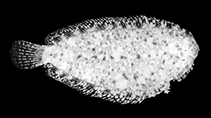http://www.fishbase.org/Summary/speciesSummary.php?genusname=Aseraggodes&speciesname=pelvicus ---> http://192.134.151.83/Summary/speciesSummary.php?genusname=Aseraggodes&speciesname=pelvicus
http://192.134.151.83/Summary/speciesSummary.php?genusname=Aseraggodes&speciesname=pelvicus ---> https://fishbase.mnhn.fr/Summary/speciesSummary.php?genusname=Aseraggodes&speciesname=pelvicus
https://fishbase.mnhn.fr/Summary/speciesSummary.php?genusname=Aseraggodes&speciesname=pelvicus ---> https://fishbase.mnhn.fr/summary/Aseraggodes-pelvicus.html
Aseraggodes pelvicus

You can
sponsor
this page
Common name (e.g. trout)
Genus + Species (e.g. Gadus morhua)
-

-
About this page
-
Languages
-
User feedbacks
-
Citation
-
Uploads
-
Related species
-


 Upload your
photos
and
videos
Upload your
photos
and
videos
Pictures
|
Google image
 Aseraggodes pelvicus
Aseraggodes pelvicus
Picture by
Randall, J.E.
Classification / Names
Common names
|
Synonyms
| Catalog of Fishes(
genus
,
species
) |
ITIS
|
CoL
|
WoRMS
|
Cloffa
Teleostei (teleosts) >
Pleuronectiformes
(Flatfishes) >
Soleidae
(Soles)
Etymology:
Aseraggodes:
Greek, aggos, -eos, -ous = vessel, uterus, carapace of a crab + Greek, aseros, -a, -on = to remove the appetite (Ref.
45335
)
;
pelvicus:
Name from the Latin word 'pelvis', referring to the long pelvic fins; longest among the species of the genus.
.
More on author:
Randall
.
Environment: milieu / climate zone / depth range / distribution range
Ecology
Marine; reef-associated. Tropical
North Central Pacific: Queensland, Australia.
Size / Weight / Age
Maturity: L
m
?
range ? - ? cm
Max length : 6.8 cm SL male/unsexed; (Ref.
57560
)
Short description
Morphology
|
Morphometrics
Dorsal
soft rays
(total): 71;
Anal
soft rays
: 49;
Vertebrae
: 36. Diagnosis: Dorsal rays 71; anal rays 49. Lateral-line scales 81: Vertebrae 36; dorsal pterygiophores anterior to fourth neural spine 14. Body depth 2.45 in SL; head length (HL) 4.75 in SL; eye diameter 6.4 in HL; upper eye overlapping anterior half of lower eye; interorbital space narrow, 12.0 in HL. Caudal peduncle present, its depth 1.45 in HL, its length 10.0 in HL. Prominent lappet-like cirri on front of snout and ventral edge of head. Lateral line aligned with dorsal edge of upper eye. Longest dorsal ray 1.25 in HL; membranous edges of anterior dorsal rays with a row of tubercle-like papillae, many with cirri, a few darkly pigmented. Caudal fin rounded and moderately long, 3.4 in SL. Pelvic fins long, 1.6 in HL, the tip of longest ray reaching base of fifth anal ray. Color of ocular side in alcohol pale yellowish brown with numerous irregular pale spots, none as large as eye, many smaller brown blotches and dots, the most conspicuous along middle of lateral line (Ref.
57560
).
Life cycle and mating behavior
Maturity
|
Reproduction
|
Spawning
|
Eggs
|
Fecundity
|
Larvae
Randall, J.E.
, 2005. A review of soles of the genus
Aseraggodes
from the South Pacific, with descriptions of seven new species and a diagnosis of
Synclidopus
. Memoirs of Museum Victoria 62(2):191-212. (Ref.
57560
)
IUCN Red List Status (Ref.
130435
)
Data deficient (DD)
; Date assessed:
06 August 2020
CITES
Not Evaluated
Not Evaluated
Threat to humans
Harmless
Human uses
FAO - Publication:
search
|
FishSource
|
More information
Countries
FAO areas
Ecosystems
Occurrences
Introductions
Stocks
Ecology
Diet
Food items
Food consumption
Ration
Common names
Synonyms
Metabolism
Predators
Ecotoxicology
Reproduction
Maturity
Spawning
Spawning aggregation
Fecundity
Eggs
Egg development
Age/Size
Growth
Length-weight
Length-length
Length-frequencies
Morphometrics
Morphology
Larvae
Larval dynamics
Recruitment
Abundance
BRUVS
References
Aquaculture
Aquaculture profile
Strains
Genetics
Electrophoreses
Heritability
Diseases
Processing
Nutrients
Mass conversion
Collaborators
Pictures
Stamps, Coins Misc.
Sounds
Ciguatera
Speed
Swim. type
Gill area
Otoliths
Brains
Vision
Tools
E-book
|
Field guide
|
Length-frequency wizard
|
Life-history tool
|
Point map
|
Classification Tree
|
Catch-MSY
|
Special reports
Check for Aquarium maintenance
|
Check for Species Fact Sheets
|
Check for Aquaculture Fact Sheets
Download XML
Summary page
|
Point data
|
Common names
|
Photos
Internet sources
AFORO (otoliths) |
Aquatic Commons
|
BHL
|
Cloffa
|
BOLDSystems
|
Websites from users
|
Check FishWatcher
|
CISTI
|
Catalog of Fishes
:
genus
,
species
|
DiscoverLife
|
ECOTOX
| FAO - Publication:
search
|
Faunafri
| Fishipedia |
Fishtrace
| GenBank:
genome
,
nucleotide
| GloBI |
Google Books
|
Google Scholar
|
Google
| IGFA World Record |
MitoFish
|
Otolith Atlas of Taiwan Fishes
|
PubMed
|
Reef Life Survey
| Socotra Atlas |
Tree of Life
| Wikipedia:
Go
,
Search
| World Records Freshwater Fishing |
Zoobank
|
Zoological Record
Estimates based on models
Phylogenetic diversity index (Ref.
82804
): PD
50
= 0.5000 [Uniqueness, from 0.5 = low to 2.0 = high].
Bayesian length-weight: a=0.00977 (0.00473 - 0.02021), b=3.07 (2.90 - 3.24), in cm total length, based on LWR estimates for this (Sub)family-body shape (Ref.
93245
).
Trophic level (Ref.
69278
): 3.4 ±0.5 se; based on size and trophs of closest relatives
Resilience (Ref.
120179
): High, minimum population doubling time less than 15 months (Preliminary K or Fecundity.).
Fishing Vulnerability (Ref.
59153
): Low vulnerability (10 of 100).
Back to Search
Random Species
Back to Top
Accessed through:
Not available
FishBase mirror site :
localhost
Page last modified by :
mrius-barile
- 20 July 2016
Fatal error
: Uncaught ArgumentCountError: Too few arguments to function checkEcotox(), 1 passed in /var/www/html/summary/speciessummary.php on line 2304 and exactly 3 expected in /var/www/html/includes/speciessummary.lib.php:2579 Stack trace: #0 /var/www/html/summary/speciessummary.php(2304): checkEcotox() #1 {main} thrown in
/var/www/html/includes/speciessummary.lib.php
on line
2579
|